
HEPA Filters H13. PCO. Ionizer and UVC
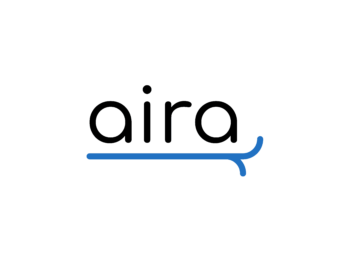
AIRA 320
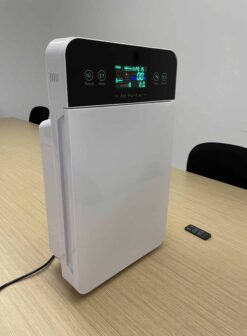
- Pre-Filter, Activated Carbon Filter, HEPA H13 Filter and PCO Anion Emission Filter
- CADR (Clean Air Delivery Rate) m³/h – 320.
- Dimensions: 330x190x550 mm³
- Power supply 230Vac
- Filter life – 2160 hours
- Filter change signaling
- PVP 189,99 (146,30+IVA)
AIRA 45
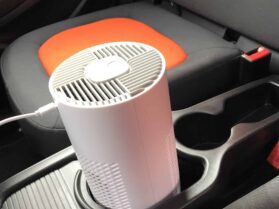
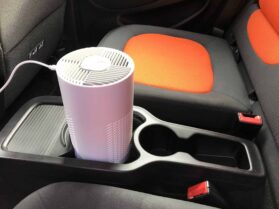
- UVC germicidal technology and HEPA H13 filter.
- Primary filter + activated carbon filter
- CADR (Clean Air Delivery Rate) m³/h – 35 to 45.
- Dimensions: 120x120x200 mm³
- USB Power Supply
- PVP 89,99 (69,30+IVA)
HEPA Filters H13. PCO. Ionizer and UVC
HEPA H13
HEPA (High Efficiency Particulate Air) filters are filters that trap particles mechanically. They are used in airplanes to filter passenger air, in surgical operating theatres, in masks, and in air conditioning systems among many others. HEPA H13 Filters are capable of retaining up to 99.95% of particles larger than 0.10 micrometers. The Sars-CoV-2 viral particles are estimated to be between 0.12 and 0.16 micrometers in size, which means that they are stopped by the filter, as are other particles, including respiratory droplets, which are the main mechanism of viral transmission according to the WHO (World Health Organization). These respiratory particles are larger than 5 micrometers in size, i.e. they are completely retained by the HEPA H13 Filter.
Before the HEPA H13 filter a pre-filter is placed that retains larger particles, e.g. dust. The purpose is to prolong the life of the HEPA Filter.
It is also possible to add an activated carbon filter to retain chemical components.
*CADR (Clean Air Delivery Rate) – According to a study by Goethe University (Frankfurt, Germany), HEPA H13 filters can help reduce the concentration of the SARS-CoV-2 virus in the air by 90%. To achieve this, the filter must allow the air in the room to be renewed 6 times in one hour.

PCO Filters – Photo Catalytic Oxidation
It uses ultraviolet light and titanium dioxide. Microorganisms are attacked by hydroxyl free radicals and by superoxide ions resulting in the breakdown of the cell structure. These oxidants penetrate the cell wall, causing lysis and inactivating the microorganism.
Ionizer
Ions are atoms that have gained or lost electrons. When you lose an electron you become a positive ion and when you gain one, you become a negative ion. The air ionizer uses energetic charges (ions) to improve air quality by using electricity to release negative ions into the environment. These ions attract and attach themselves to impurities such as pollen, bacteria, and spores. The expelled air droplets and dust particles that can carry viruses do not have electrons, so they are attracted to other atoms and molecules. In this way, the atoms released by ionization bond with the suspended microparticles, making them larger, so that they are more easily trapped in the filters. It is an active process that provides continuous disinfection. The technology also produces a chemical reaction on the surface of the cell membrane that inactivates the viruses.
UVC
Equipment based on closed tubes with forced air ventilation. The length of the tubes, the number of lamps, and the air velocity are calculated so that the air circulation time inside the tube is sufficient to promote the inactivation of the viral particles present in the aerosols.
The device is calculated so that air renewal in the room or space occurs 6 to 12 times in one hour.
These solutions are suitable for all enclosed spaces, including, offices, schools, companies, waiting areas, public transport, hospitals, offices, stores, supermarkets, shopping centers, and so on.
It can also be installed in existing HVAC (air conditioning systems).
These systems are designed to work in the presence of people.
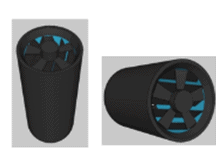
Dynasys – Engenharia e Telecomunicações, S.A.
Centro Empresarial Sado Internacional – Edifício E4
Estrada Nacional 10, Vale da Rosa
2910-835 Setúbal, Portugal
Tel: +351 265 706 900
Fax: +351 265 706 909
info@dynasys.pt
comercial@dynasys.pt

